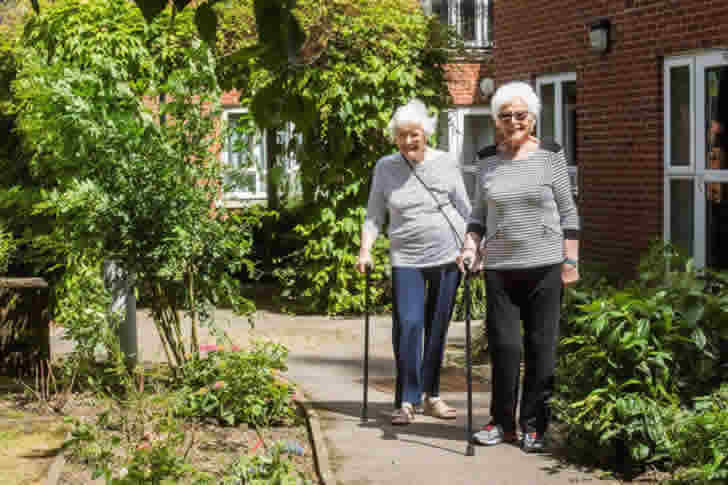How to Enjoy Comfortable and Affordable Senior Living in the UK
As the UK’s population ages, understanding the independent living options available for seniors is increasingly important. This guide explores various housing and care choices that enable older adults to maintain autonomy and quality of life.

1. Overview of the Ageing Population in the UK
The UK is experiencing a significant demographic shift. According to the Office for National Statistics (ONS), over 12 million people were aged 65 and over in mid-2020, comprising 18.5% of the population. Projections indicate that by 2043, nearly one in four people in the UK will be aged 65 or over. This trend underscores the need for suitable living arrangements that support seniors’ independence and well-being.
2. Importance of Independent Living
Independent living empowers seniors to:
- Maintain Control: Make their own decisions about daily activities and lifestyle.
- Enhance Well-being: Stay physically active and mentally engaged.
- Stay Connected: Engage with the community and reduce feelings of isolation.
- Delay Intensive Care: Potentially postpone the need for residential care services.
Studies have shown that seniors who live independently often experience better health outcomes and higher satisfaction levels.
3. Independent Living Options for Seniors in the UK
Below are the primary independent living options available:
Age-exclusive Housing
- Description: Residential properties designed for those typically aged 55 or 60 and over.
- Features: Accessibility adaptations like stairlifts and emergency alarm systems; communal areas for socializing.
- Care Services: Not provided.
Retirement Villages
- Description: Large developments offering various housing options within a community setting.
- Features: Amenities such as restaurants, gyms, swimming pools, and hobby clubs.
- Care Services: Sometimes available on-site.
Extra Care Housing (Assisted Living)
- Description: Self-contained homes with access to flexible on-site care and support.
- Features: Communal dining areas, organized social activities, and personal care services.
- Care Services: Tailored to individual needs.
Homeshare Schemes
- Description: An arrangement where a senior offers accommodation in exchange for help with daily tasks.
- Features: Companionship, assistance with shopping, cooking, or gardening.
- Care Services: Provided by the homesharer.
Shared Lives Schemes
- Description: Seniors live with a host family or individual in a supportive, family-like environment.
- Features: Integration into the host’s daily life, offering companionship and assistance.
- Care Services: Provided by the host.
Comparison Table of Independent Living Options
| Option | Accommodation Type | Care Services | Facilities/Amenities | Ideal For |
|---|---|---|---|---|
| Age-exclusive Housing | Private homes/flats | Not provided | May include communal areas | Seniors wanting independence without care |
| Retirement Villages | Houses/apartments | Sometimes available | Extensive leisure facilities | Active seniors desiring community living |
| Extra Care Housing | Self-contained units | Available on-site | Dining, social activities | Seniors needing occasional support |
| Homeshare Schemes | Own home | Provided by homesharer | Varies | Seniors seeking companionship/help |
| Shared Lives Schemes | Host family home | Provided by host | Family environment | Seniors preferring a family setting |
4. Factors to Consider When Choosing an Option
- Level of Independence: Determine the amount of support needed for daily activities.
- Location: Consider proximity to family, healthcare facilities, and community services.
- Cost: Evaluate purchase or rental costs, service charges, and care fees.
- Amenities and Social Opportunities: Look for facilities and activities that enhance life quality.
- Future Needs: Anticipate potential changes in health and mobility.
5. Financial Considerations
Funding independent living involves multiple sources:
Private Funding
- Savings and Pensions: Utilizing personal financial resources.
- Property Sale: Proceeds from selling an existing home.
- Equity Release: Accessing the value tied up in property.
Government Support
- Attendance Allowance: For those over 65 needing help with personal care.
- Personal Independence Payment (PIP): For individuals under State Pension age requiring assistance.
- Carer’s Allowance: For those providing significant care to someone else.
Local Authority Assistance
- Financial Assessment: Councils may cover some care costs based on financial circumstances.
- Home Adaptations: Grants for modifying homes to meet accessibility needs.
Charitable Grants
- Organizations like Turn2us: Provide resources to find grants for housing or essential items.
6. Legal Considerations
- Tenancy Agreements: Understand terms, including notice periods and maintenance responsibilities.
- Leasehold Information: Review lease length, ground rent, and service charges when purchasing property.
- Care Contracts: Ensure clarity on services provided, costs, and termination procedures.
7. Support Services Available
Home Care Services
- Description: Professional caregivers assist with personal care, medication, and daily tasks.
- Access: Through local councils or private providers.
Community Services
- Meals on Wheels: Hot meal delivery for those unable to cook.
- Day Centres: Social activities, meals, and sometimes health services.
- Transportation Services: Help with attending appointments and social events.
Telecare and Assistive Technology
- Personal Alarms: Devices to call for help in emergencies.
- Fall Detectors: Sensors that alert responders if a fall occurs.
- Medication Reminders: Electronic prompts for medication schedules.
8. How to Access Independent Living Options
- Consult Social Services: Contact local council’s adult social services for assessments.
- Advisory Services: Utilize organizations like Age UK and Independent Age for guidance.
- Visit Housing Options: Tour facilities to assess suitability and ask questions.
9. Conclusion
Selecting the right independent living option is crucial for seniors to maintain autonomy and well-being. By considering personal needs and financial circumstances, and utilizing available resources, older adults can find a living arrangement that supports their independence.
10. Additional Resources
- Age UK: www.ageuk.org.uk
Offers advice on housing, care, and financial matters. - Elderly Accommodation Counsel (EAC): www.housingcare.org
Provides a housing options directory and personalized advice. - NHS Choices – Care and Support: www.nhs.uk/conditions/social-care-and-support-guide
Information on care services and support. - Independent Age: www.independentage.org
Advice and support for older people and their families.






